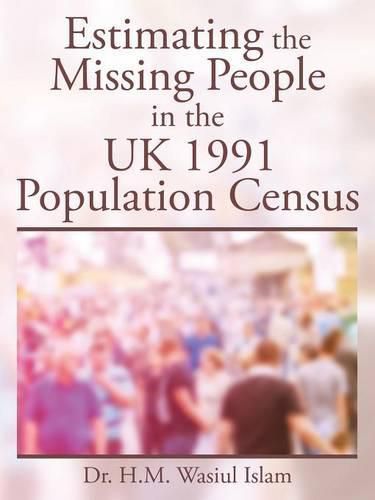Readings Newsletter
Become a Readings Member to make your shopping experience even easier.
Sign in or sign up for free!
You’re not far away from qualifying for FREE standard shipping within Australia
You’ve qualified for FREE standard shipping within Australia
The cart is loading…






This title is printed to order. This book may have been self-published. If so, we cannot guarantee the quality of the content. In the main most books will have gone through the editing process however some may not. We therefore suggest that you be aware of this before ordering this book. If in doubt check either the author or publisher’s details as we are unable to accept any returns unless they are faulty. Please contact us if you have any questions.
In order to assess the coverage and the quality of the census data of the 1991 census, the Census Validation Survey (CVS) was carried out by the Social Survey Division of OPCS. The survey produced estimates of household spaces, households, and persons together with 95 percent confidence intervals. The CVS estimated the census undercount from six different samples, five of which were drawn from the census records and hence dependent. From the comparison between 1991 census results and demographic estimates, it was felt that CVS failed to estimate the true undercount figure of the 1991 census. Moreover, the CVS methodology was unable to estimate the undercount by age, sex, race, and geographic categories. This book presents methods for estimating population by age, sex, and race, as well as geographic categories. Three different estimators, Chandra-Sekar, Greenfield, and El-Sayed Nour, using information from two different sources (census and survey), are discussed. Adjustment factors are generally computed as the ratios of these estimates to the census counts. Average estimates from these three estimators may produce better adjustment factors. Models to produce more accurate estimates of the size of the closed population by using a second sample by matching with census and survey are also discussed. The models we present provide a mechanism for separating out the dependence between census and survey data induced by individual heterogeneity. The resulting data take the form of 2x2x2 table, in which only one of the eight cells is unknown. Using log-linear quasi-symmetry models we describe how to estimate the expected values of the observable cells of this table. To estimate the populations for local authorities (LA), a regression method is presented. The resulting estimates are found to be more accurate than the CVS estimates and were also close to the 1991 demographic estimates. We describe a methodology for estimating the accuracy of the dual systems estimates of population with the help of hypothetical data. The methodology is based on decompositions of the total error into components, such as sampling error, matching error, and other nonsampling errors. An imputation method and some recommendations are also discussed.
$9.00 standard shipping within Australia
FREE standard shipping within Australia for orders over $100.00
Express & International shipping calculated at checkout
This title is printed to order. This book may have been self-published. If so, we cannot guarantee the quality of the content. In the main most books will have gone through the editing process however some may not. We therefore suggest that you be aware of this before ordering this book. If in doubt check either the author or publisher’s details as we are unable to accept any returns unless they are faulty. Please contact us if you have any questions.
In order to assess the coverage and the quality of the census data of the 1991 census, the Census Validation Survey (CVS) was carried out by the Social Survey Division of OPCS. The survey produced estimates of household spaces, households, and persons together with 95 percent confidence intervals. The CVS estimated the census undercount from six different samples, five of which were drawn from the census records and hence dependent. From the comparison between 1991 census results and demographic estimates, it was felt that CVS failed to estimate the true undercount figure of the 1991 census. Moreover, the CVS methodology was unable to estimate the undercount by age, sex, race, and geographic categories. This book presents methods for estimating population by age, sex, and race, as well as geographic categories. Three different estimators, Chandra-Sekar, Greenfield, and El-Sayed Nour, using information from two different sources (census and survey), are discussed. Adjustment factors are generally computed as the ratios of these estimates to the census counts. Average estimates from these three estimators may produce better adjustment factors. Models to produce more accurate estimates of the size of the closed population by using a second sample by matching with census and survey are also discussed. The models we present provide a mechanism for separating out the dependence between census and survey data induced by individual heterogeneity. The resulting data take the form of 2x2x2 table, in which only one of the eight cells is unknown. Using log-linear quasi-symmetry models we describe how to estimate the expected values of the observable cells of this table. To estimate the populations for local authorities (LA), a regression method is presented. The resulting estimates are found to be more accurate than the CVS estimates and were also close to the 1991 demographic estimates. We describe a methodology for estimating the accuracy of the dual systems estimates of population with the help of hypothetical data. The methodology is based on decompositions of the total error into components, such as sampling error, matching error, and other nonsampling errors. An imputation method and some recommendations are also discussed.